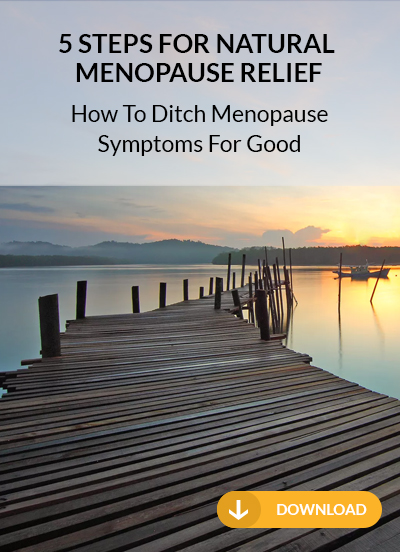Generally, no. Most hormone pellets used in bioidentical hormone replacement therapy (BHRT)—especially estradiol pellets for women and testosterone pellets used in wellness settings—are custom-compounded products. Compounded pellets are not reviewed or approved by the FDA for safety, effectiveness, or manufacturing quality, and major medical groups advise against routine use when FDA-approved options exist. High-quality, FDA-approved forms of bioidentical hormones are available in other delivery methods (patches, gels, sprays, tablets, and injections).
Sources: NAMS 2022 Position Statement; Endocrine Society Scientific Statement; ACOG 2023 Clinical Consensus; NIH/NCBI overview.
What “FDA-Approved” Actually Means
“FDA-approved” means a specific drug product and dose has undergone rigorous testing for safety, effectiveness, and quality control. By contrast, compounded products are made per prescription by a compounding pharmacy and do not undergo the same FDA review. That doesn’t automatically make a compounded product unsafe—but it does mean there’s less evidence behind the exact dose, the release profile, and long-term outcomes. (Endocrine Society; ACOG)
Where Pellets Fit In (And Why They’re Controversial)
- Dosing and variability: Release can be inconsistent, and dose adjustments are slow—once a pellet is in, you can’t easily lower the dose. (ACOG; Endocrine Society)
- Data gaps: There’s limited high-quality evidence on safety and efficacy of compounded pellets compared to FDA-approved modalities. (NAMS 2022; Endocrine Society)
- Adverse effects: Reports include supraphysiologic levels, mood changes, acne, hair growth or loss, and uterine bleeding in women; removal may require a minor procedure. (ACOG)
What The Evidence Says (In Plain English)
- For menopausal symptoms: NAMS and ACOG emphasize that FDA-approved forms of bioidentical estradiol and micronized progesterone have good evidence for symptom relief with known safety profiles when used appropriately. Pellets, being compounded, don’t share the same evidence base. (NAMS 2022; ACOG 2023)
- For “personalized” compounding: Major groups caution that claims of superior safety or efficacy of compounded “bioidentical” formulations are not supported by robust data. (Endocrine Society; ACOG)
- Risk/benefit context: As with any hormone therapy, risks and benefits depend on age, timing since menopause, dose, route, and health history. (NAMS 2022; NIH/NCBI overview)
Are There Any FDA-Approved Pellets?
Most pellets used in BHRT clinics are compounded and not FDA-approved. FDA-approved options do exist for some hormones—but most menopausal care needs can be met with FDA-approved non-pellet options (patches, gels, sprays, oral/transdermal progesterone) that allow precise dosing and easier adjustments. (NAMS 2022; ACOG 2023)
Bottom line: If an office uses pellets, ask whether the exact product is FDA-approved. If it’s compounded, it’s not FDA-approved.
Who Might Consider Pellets?
In select cases—such as patients who have failed multiple FDA-approved routes or have adherence barriers—some clinicians and patients discuss pellets as an individualized option. If pursued, you should have a clear plan for:
- Why pellets vs. an FDA-approved alternative
- Target lab ranges and symptom goals
- Monitoring schedule (symptoms, labs) and a plan for managing side effects
- Informed consent covering the off-label/compounded nature and alternatives
(Endocrine Society; ACOG)
Safer, Evidence-Guided Alternatives
- Estradiol patches/gels/sprays for hot flashes and night sweats
- Micronized progesterone (if you have a uterus) to protect the uterine lining
- Testosterone (for men with confirmed hypogonadism) via FDA-approved formulations when indicated
These routes allow fine-tuning, easier dose changes, and better-aligned safety data. (NAMS 2022; NIH/NCBI overview)
Our Approach At Joanne Sumpio Hinson MD PLLC
At Joanne Sumpio Hinson MD PLLC, we prioritize FDA-approved bioidentical options first because they carry clearer safety and quality assurance. We’ll consider compounded therapies only when clinically justified, after reviewing your history, labs, goals, and prior treatment responses. If pellets are discussed, we’ll walk through benefits, risks, alternatives, and a detailed monitoring plan.
- Ready to talk with a clinician? Book a Discovery Consult
Questions To Ask Your Provider
- Is this exact pellet FDA-approved, or is it compounded?
- What dose and release curve are expected, and how will we adjust if I’m over- or under-dosed?
- What alternatives (FDA-approved patches, gels, tablets) could meet the same goals with easier dose control?
- What side effects should I watch for, and how will we monitor labs and symptoms?
- What is the exit plan if I want to stop or need dose reduction?
Takeaway
- Most BHRT pellets are not FDA-approved because they’re compounded.
- Leading medical organizations recommend FDA-approved, evidence-based options first, reserving compounded approaches (including pellets) for specific, justified cases with informed consent and close follow-up.
If you’re considering pellets, we’ll help you weigh convenience against evidence, safety, and flexibility—and choose the route that best fits your health goals.
Sources
- North American Menopause Society (NAMS). 2022 Hormone Therapy Position Statement. https://pubmed.ncbi.nlm.nih.gov/35797481/
- Endocrine Society. Compounded Bioidentical Hormone Therapy Scientific Statement. https://www.endocrine.org/advocacy/position-statements/compounded-bioidentical-hormone-therapy
- ACOG. Compounded Bioidentical Menopausal Hormone Therapy (Clinical Consensus, 2023). https://www.acog.org/clinical/clinical-guidance/clinical-consensus/articles/2023/11/compounded-bioidentical-menopausal-hormone-therapy
- NIH/NCBI. Menopausal Hormone Therapy—Risks and Benefits Overview. https://pmc.ncbi.nlm.nih.gov/articles/PMC8034540/






0 Comments